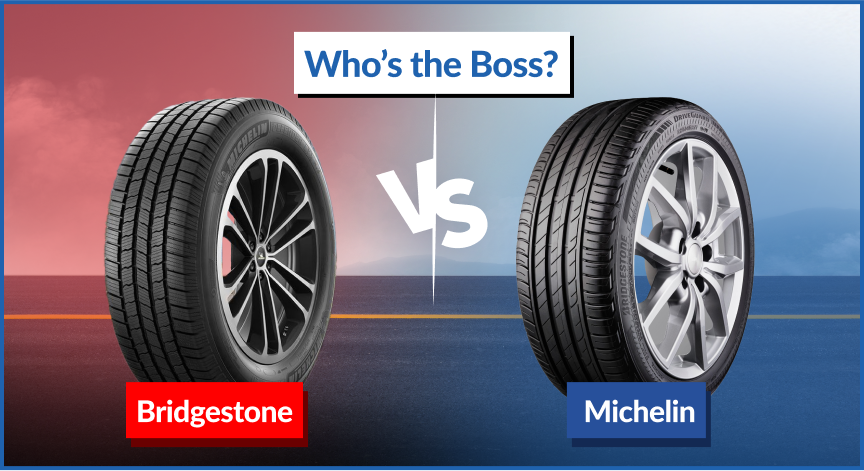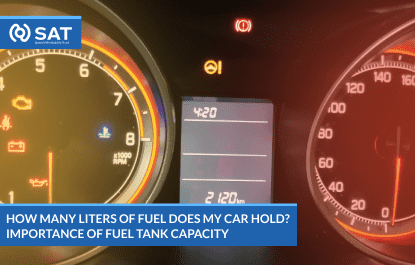
Bridgestone Vs. Michelin Tires – Who’s the Boss
Bridgestone and Michelin are the two industry giants of the tire market.

Honda and Toyota are undoubtedly the leading names when it comes to car manufacturers. Both companies have made numerous successful cars that are loved by people globally. The vehicles produced by these companies are known for their class, comfort, and innovation. In this blog, we will do a car comparison between the Honda Pilot vs Toyota Highlander.
The first generation of the Honda Pilot was launched in April 2003. Since its launch, this car has remained one of the favorites of car lovers. The Honda Pilot is currently in its fourth generation, with multiple modifications occurring across each generation. Due to its commendable features, this vehicle has a worldwide market, including Asia, North America, and Europe. The car’s features are discussed below.
The Honda Pilot is a big vehicle with a seating capacity for eight people. The trunk space is also huge, with 87 cubic feet of space, if the second and third rows of seats are folded. Coming towards the safety features, the Honda Pilot comes with multiple airbags. It has front, side, side curtain air, overhead, and knee airbags, so the passengers’ safety is not at risk in case of any collision. This car also comes with child locks, so your children cannot open their door from the inside. Another safety feature worth considering in this vehicle is its blind spot information system that alerts the driver if anything is detected in the blind spot zone in an adjacent lane.
The Honda Pilot is not short on luxury features either. It includes color touch screens, a wireless Apple car play facility, android auto compatibility, an internet hotspot, and a wireless phone charging facility. The Honda Pilot also moves beyond the standard air-conditioner, heater, and defogger. It is also equipped with a heated steering wheel and heated door mirrors to keep you warm if the weather gets too cold outside. This vehicle also has a climate control feature to help you maintain the temperature inside the car. The Honda Pilot also includes power steering, power windows, power mirrors, and a power door lock, so the driver can have full control of the vehicle with a push of a button. The vehicle also has a smart keyless entry as well as an aesthetic one-touch power panoramic moonroof, which simply adds to the class of this luxurious vehicle.
Now, let’s explore the exterior features of the Honda Pilot. This mid-size SUV has the following dimensions: 5.08m * 1.99m * 1.8m. As you can see, this vehicle is relatively larger than other vehicles. The Honda Pilot weighs 2086 kilograms. The vehicle comes with alloy wheels with a size of 20 inches, so there is a strong grip on the road and the braking process is safe.
The Honda Pilot runs on petrol and has a tank capacity of 70 L. At 3498 cc, the Honda Pilot provides a standard horsepower of 285 hp at 6100 RPM. The maximum speed of the car is 180 KM/H. Moving on to the mileage, the city mileage for the Honda Pilot is 8 KM/L, and the highway mileage is 11.5 KM/L. Hence, these are factors that one should consider before purchasing this car.
To find out more information about the Honda Pilot or other used Japanese vehicles, visit us at SAT Japan
Toyota is one of the leading car makers in the world and has successfully produced many remarkable vehicles. One of its top vehicles is the Toyota Highlander. The first generation of this vehicle came in 2001. Many modifications followed and now the car is currently in its fourth generation. Below, we discuss the features of the Toyota Highlander platinum.
The Toyota Highlander SUV has a leather seating capacity for seven people. With all the back seats folded, the Highlander gives a massive boot space of 84.3 cubic feet. The Highlander Platinum also has a total of eight airbags at the side, front, overhead, and knee. This ensures that the passengers remain safe in case of any unfortunate incident. For the protection of children, the car comes with child locks as well as child seat anchors. Other safety features include traction control, where the vehicle automatically applies brakes or cuts down the engine power to a slipping wheel of the car. The car also has an immobilizer to prevent thieves from taking your car.
The Highlander has many luxury features as well. The vehicle comes with a sunroof and a moonroof. Other than the air-conditioner, heater, and defogger, the Highlander also has a climate control feature. It also has a smart keyless entry and push start feature. Just like the Honda Pilot, the Toyota Highlander also provides power door locks, mirrors, windows, steering, and boot, so the driver has full control of the vehicle. The car has both front and rear cameras, which make driving easier in congested places. Additional comfort features include rear seat headrest, front and rear power outlets, armrest, cupholders, rear wipers, and heated seats. All these features make the Highlander stand out from other vehicles.
Now we will have a look at the exterior features of the Toyota Highlander. This four-door SUV has the following dimensions: 4.95m * 1.93m * 1.73m. Since the Highlander is a seven-seater, it is relatively larger than other vehicles. The weight of the car is 1932 kilograms, which is less than the weight of the Honda Pilot. However, just like the Honda Pilot, the Highlander also comes with alloy wheels of 20 inches. Hence, both vehicles provide a strong grip on the road and an effective braking process.
The Toyota Highlander has a petrol-run engine with approximately the same tank capacity (68 L) as the Honda Pilot (70 L). Both vehicles also have the same cubic capacity, more or less. The Honda Pilot is 3498 cc, while the Toyota Highlander is 3487 cc. The Highlander provides a higher horsepower of 295 HP at 6600 RPM. The maximum speed of the vehicle is 200 KM/H. Moving towards the mileage, the city mileage for the Highlander is 7 KM/L and the highway mileage is 9 KM/L. Hence, the mileage is less than that of the Honda Pilot.
To find out more information about the Toyota Highlander or other used Japanese vehicles, visit us at SAT Japan.
In this blog, we discussed the specifications of two hit vehicles by the top two car makers in the world. While there are many similarities between these two vehicles, they do differ in some areas, such as petrol consumption. However, it can be agreed that both are luxury cars that provide a wide range of comfort features for the riders to enjoy.To get a complete car comparison side by side for both of these vehicles, visit the following page. SAT Japan

Bridgestone and Michelin are the two industry giants of the tire market.

Considering the recent developments in the world order, oil prices have increased significantly over the last decade. During such times, being well-researched about your car fuel tank and its features can be extremely useful in cost-cutting. Knowing about your car’s fuel capacity may not seem too significant at face value, but such a basic factor […]

Subaru is widely known for being a highly reliable manufacturer of vehicles that are simultaneously safe and stylish. Because of Subaru Models‘ performance and reliability, these vehicles have a loyal fanbase that swears by them. However, there are some limitations with their boxer engine, and one of the faults in some Subaru vehicles is the […]